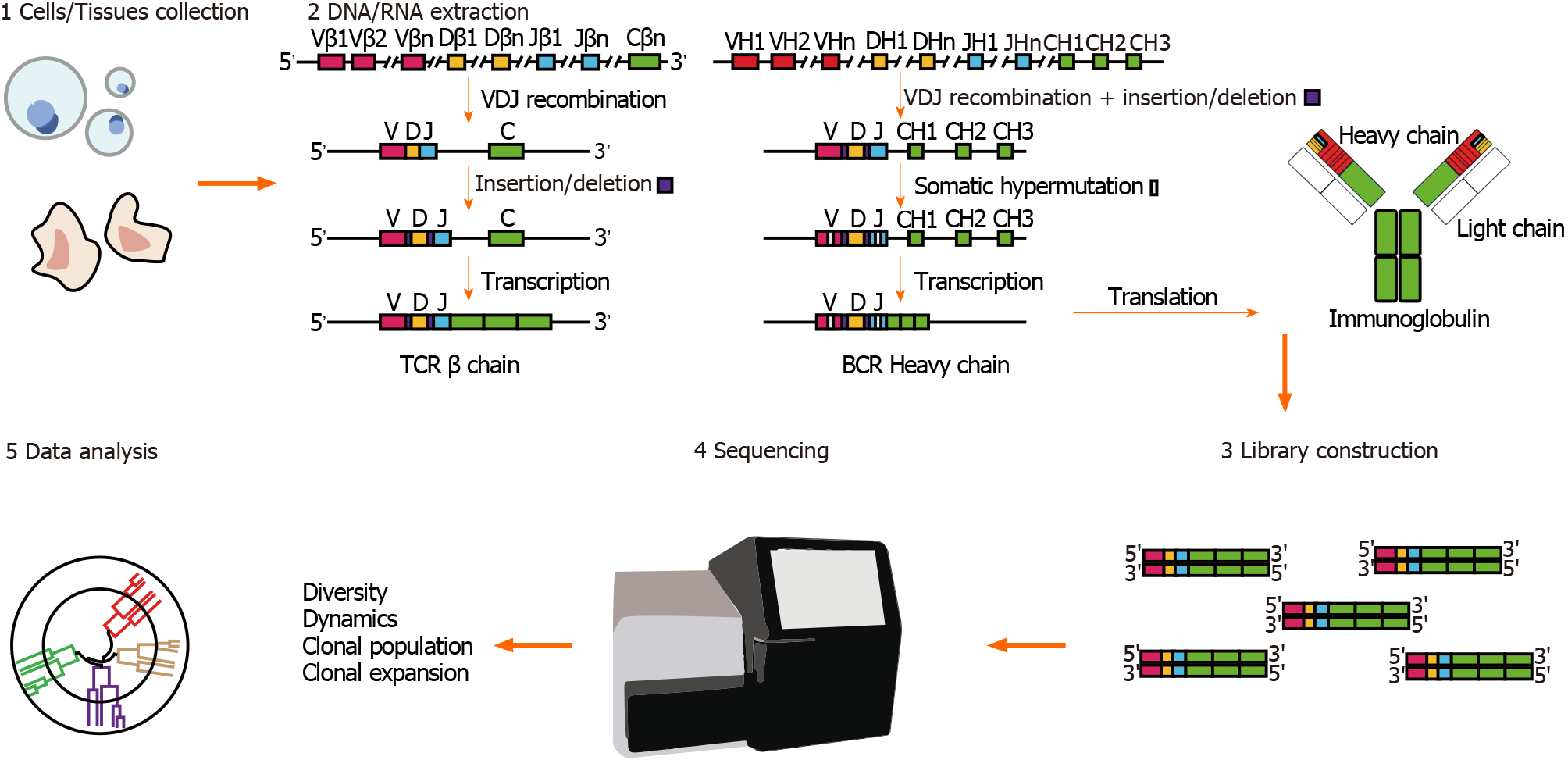Copyright
©The Author(s) 2021.
World J Gastroenterol. Jul 7, 2021; 27(25): 3790-3801
Published online Jul 7, 2021. doi: 10.3748/wjg.v27.i25.3790
Published online Jul 7, 2021. doi: 10.3748/wjg.v27.i25.3790
Figure 2 Workflow for immune repertoire sequencing.
There are mainly five sections in immune repertoire analysis. 1: Cell/tissue collection. 2: DNA/RNA extraction. The figure illustrates the gene recombination and transcription of T-cell receptors (TCRs) and B-cell receptors (BCRs). The V, D, and J gene segments of TCRs and BCRs undergo somatic rearrangement and gene insertion/deletion before transcription to generate highly variable CDR3 regions, which are then translated as TCRs and immunoglobulins. 3: Library construction by next-generation sequencing methods are used to complete the library preparation and amplification. 4: Data sequencing. 5: Data analysis. BCR: B-cell receptor; CDR3: Complementary determining region 3; TCR: T-cell receptor.
- Citation: Zhan Q, Xu JH, Yu YY, Lo KK E, Felicianna, El-Nezami H, Zeng Z. Human immune repertoire in hepatitis B virus infection. World J Gastroenterol 2021; 27(25): 3790-3801
- URL: https://www.wjgnet.com/1007-9327/full/v27/i25/3790.htm
- DOI: https://dx.doi.org/10.3748/wjg.v27.i25.3790









